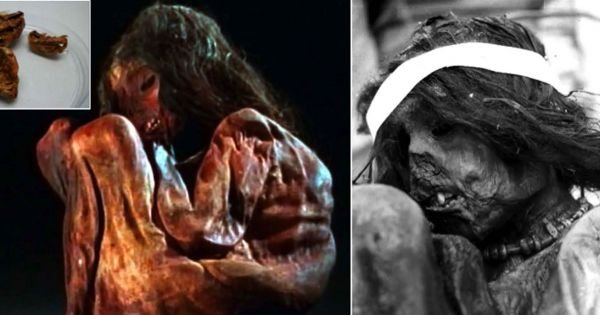Mummified Inca boy to be returned to his burial site
[ad_1]
Mummified Inca boy to be returned to his burial site
Only some of the elements that the remains had at the moment of their discovery will be on display for tourists
Authorities in the Argentine province of Mendoza announced that the mummified remains of an 8-year-old Inca boy will be returned to the place where they were found 37 years ago.
The mummified and perfectly preserved remains of an Inca child, found on January 8, 1985, by a group of mountaineers on Mount Aconcagua, will be returned to the mountain. Mendoza Cultural Heritage Director Horacio Chiavazza said that only some of the elements that the remains had at the moment of their discovery would be on display for tourists but no longer the mummified child.
Mendoza archaeologist Victor Durán said that the idea was always to return it to its place, of course, in conditions for its conservation and with a whole sample for the interpretation of the culture. The fact that the province can take it forward is excellent news because it is a patrimonial finding that speaks a lot about us. Exhibiting the pieces with which the remains of the Inca child were found will be a great attraction for the people of Mendoza and for international tourism.
On Tuesday, January 8, 1985, five climbers from Mendoza who were trying to reach the summit of Mount Aconcagua found the mummified child. They were more than 5,300 meters above sea level. Apparently, the child had been offered in sacrifice by the Incas who inhabited the area in the year 1500.
After its discovery, the remains were extracted and taken to a museum where genetic and archaeological analyses were carried out. The studies confirmed that the child had been in the area for almost 500 years and that the Inca civilizations were indeed living in the area in the 15th and 16th centuries.
Since the discovery, the Inca child has been kept at the Scientific and Technological Center (CCT) and is not exhibited to the public. At the time of his discovery, he was wearing an uncu (Andean tunic or shirt, without sleeves) made of wool and was wearing sandals made of wool and hair with vegetable fiber soles.
In 2015, a team led by geneticist Antonio Salas of the University of Santiago de Compostela, Spain, decoded the boy’s DNA and compared it to a database of 28,000 genomes. The child belonged to a human lineage that was formed 14,300 years ago and no longer exists on the planet.
The fact that it is a mummified body is almost unprecedented. There was only one previous case. Fernando Pepe, an archaeologist from of the National Program of Identification and Restitution of Human Remains of the National Institute of Indigenous Affairs (INAI), told Tiempo Argentino that 22 indigenous human remains have already been returned to their communities of origin. Of those remains, only one sacred mummy was restituted so far. It was on October 21, 2019, in Catamarca, to the community of Antofalla in the department of Antofagasta de la Sierra.
He added that there were several claims by native communities who expect the mortal remains of their ancestors will be returned to them. The bodies are in different museums nationwide and have been exhibited since the so-called Desert Campaign in the late 1800s.
There are many provinces that have adhered to Law 25.517, which provides for the return of the remains and gives INAI the power to carry it out. There are provinces that have not adhered but they still carry out restitutions with the provincial laws, which we think is a good thing, we promote that the claims of the native communities are attended to, that is what is important, beyond the fact that the national or provincial law is applied, Pepe explained.
He also pointed out that the request for the restitution of the communities’ ancestors is a historical claim. In Argentina, it has been carried out since 2006, especially since 2010 when Cristina Fernández de Kirchner regulated the national law with decree 701/10, Pepe noted.
(Source: Tiempo Argentino)
[ad_2]
Source link




